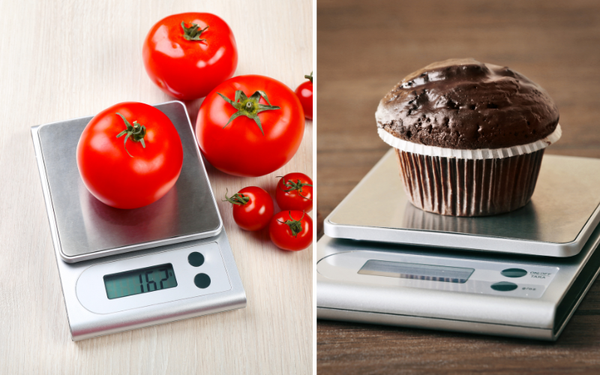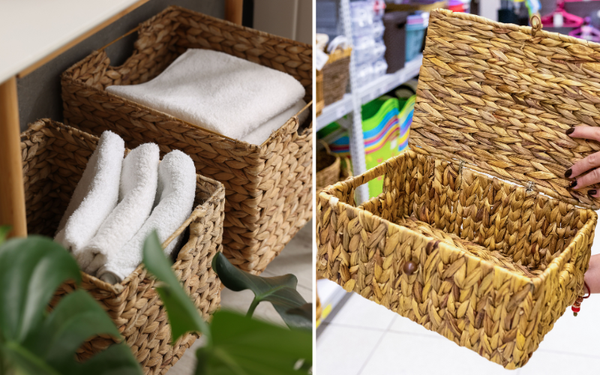Can you put water and flowers in a ceramic vase? Yes, you can, but the suitability depends on the type of ceramic and its finish. We’ll guide you through the specifics of using ceramic vases for fresh flowers, covering everything from vase selection and flower arrangement to maintenance and troubleshooting. By the end, you’ll know how to keep your blossoms thriving in a ceramic vase without any guesswork.
Key Takeaways
- Ceramic vases’ ability to hold water is dependent on factors such as the type of clay used, firing temperature, and whether they are glazed to prevent water absorption and ensure durability.
- For displaying fresh flowers in ceramic vases, proper preparation of flowers, selection of the right vase shape, and regular maintenance of water quality can extend the beauty and life of floral arrangements.
- Caring for ceramic vases involves gentle hand washing, avoiding harsh chemicals, and inspecting for damage to maintain their structural integrity and prevent leaks, while non-waterproof vases can be repurposed for decorative uses.
The Basics: Ceramic Vases and Water Compatibility
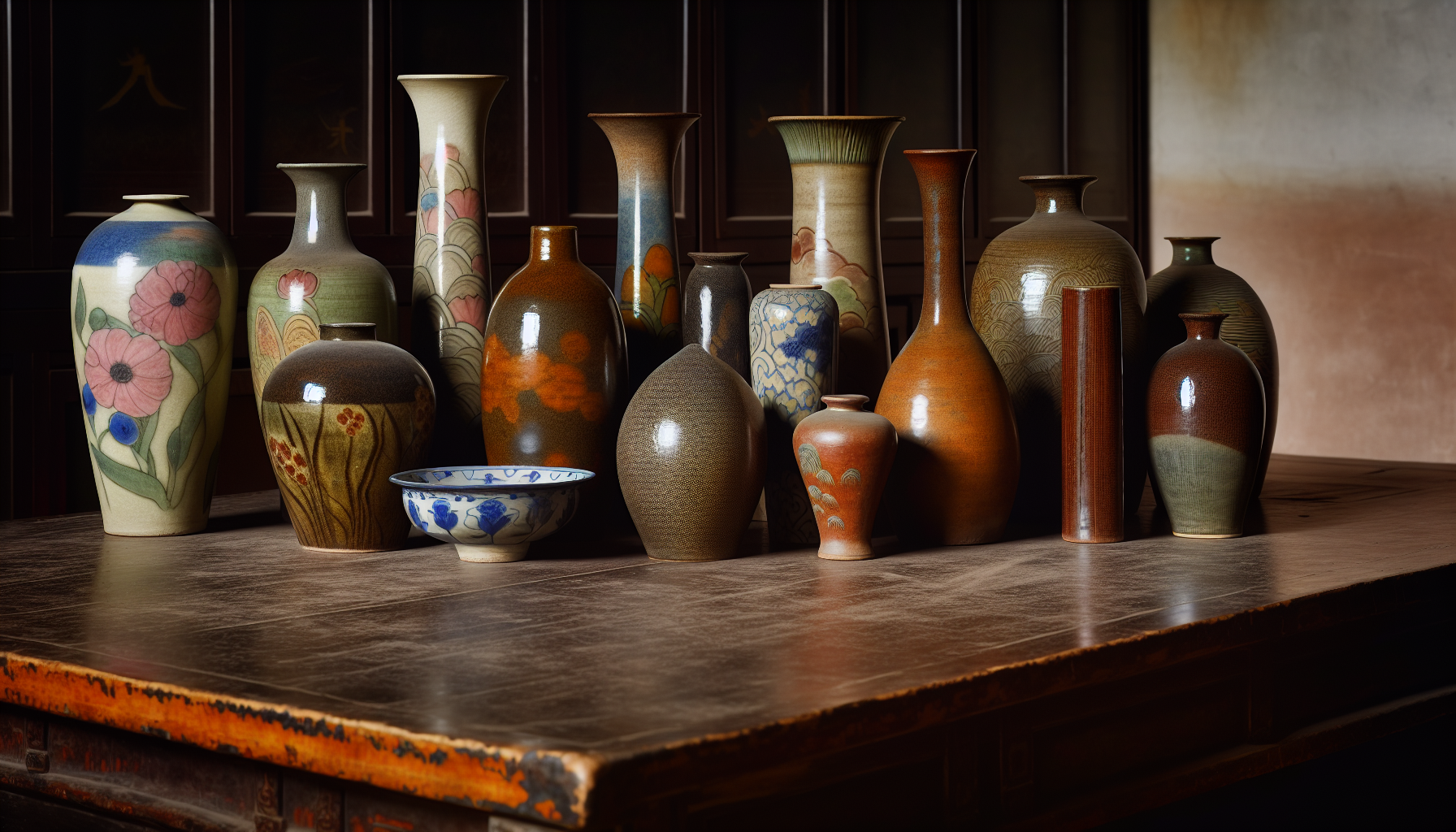
Ceramic vases offer the perfect blend of functionality and decorative appeal. Their inherent ability to hold water, however, is determined by the clay body used in their construction. Stoneware, porcelain, and earthenware are the most common types of ceramics, with differing water resistance due to their unique material properties. The higher firing temperatures of stoneware and porcelain make them more durable and less porous than earthenware, which is typically glazed for waterproofing.
Beyond the material composition, other factors such as the vase’s:
- thickness
- glazing
- firing temperature
- design
Ceramic vases not only hold water effectively but also possess the ability to absorb water, which plays a significant part in their water resistance and durability. These factors collectively contribute to the suitability of ceramic vases for displaying fresh flowers.
Composition of Ceramic Vases
Ceramic vases are fundamentally composed of clay, minerals, and water, which determines their structure and water-holding capacity. Considering the three primary types of ceramics - earthenware, stoneware, and porcelain, each has unique attributes influencing their water retention abilities.
Earthenware is less naturally water-resistant due to its high porosity. It requires glazing to achieve waterproof qualities, unlike stoneware or porcelain which have lower porosity due to higher firing temperatures. This understanding of ceramics’ composition is pivotal in ensuring the correct use and maintenance of ceramic vases.
Glazing Techniques and Water Resistance
The narrative of water compatibility with ceramic vases extends to glazing techniques. Apart from elevating the aesthetics of ceramic vases, glazing significantly contributes to their water resistance. A properly sealed clay body during the firing process can render glazed ceramic vases both waterproof and food-safe. Conversely, unglazed ceramics are porous and not waterproof, making them unsuitable for holding water without a proper glaze coating.
The specific proportions of glass-formers, fluxes, and stabilizers in glazes affect their properties, including water resistance. Special glazes that create pores can compromise the water resistance of ceramic vases by increasing the likelihood of liquid absorption. Furthermore, the firing temperatures during glazing also impact the vitreous nature and durability of the glazes.
Displaying Fresh Flowers in Ceramic Vases
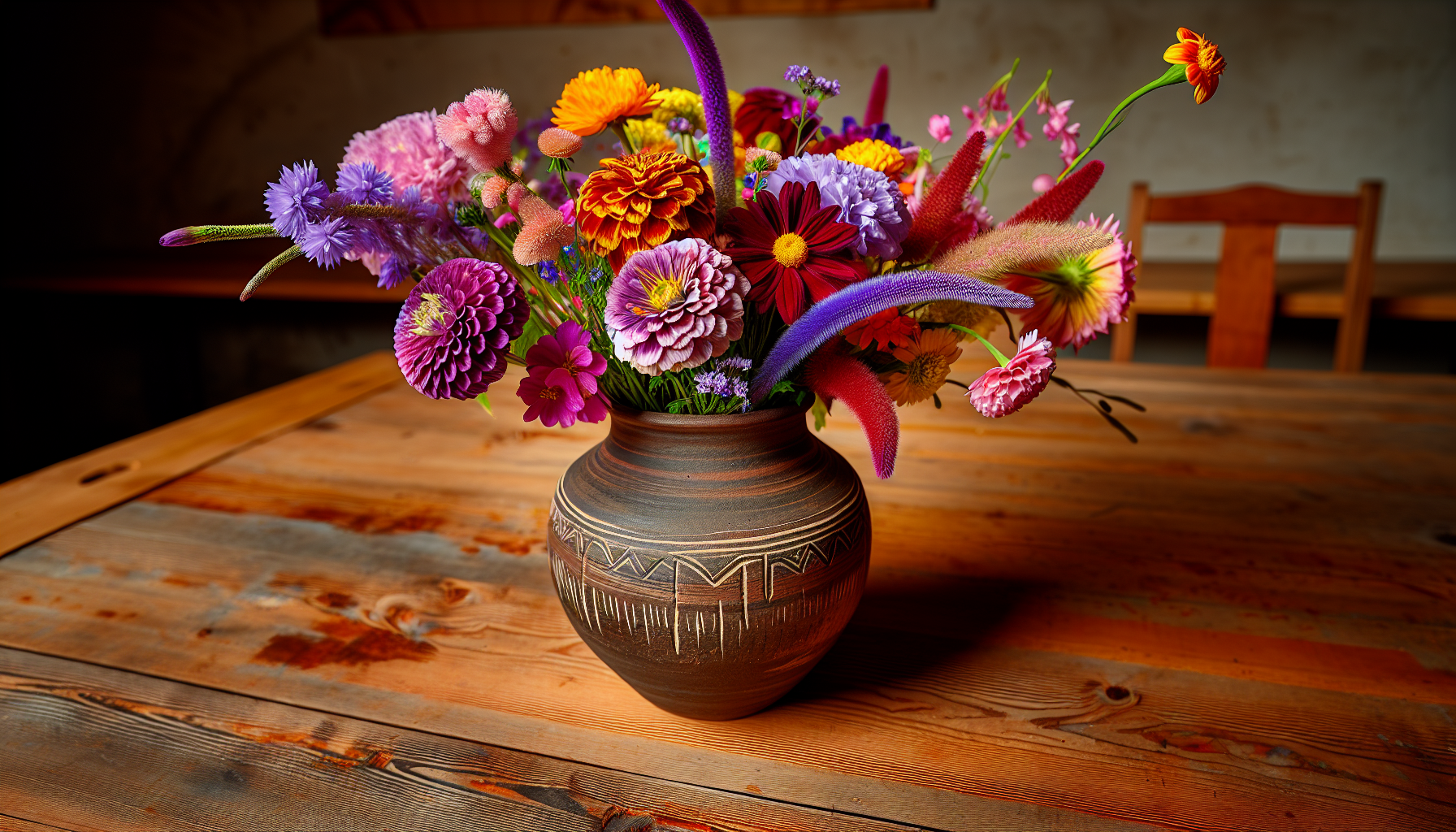
Primarily, ceramic vases serve the functional purpose of holding and displaying fresh flowers, a practice as ancient as ceramics. Nonetheless, the charm of fresh flowers in a ceramic vase remains timeless. The vibrant colors of the flowers contrast beautifully with the earthy tones of the ceramic, creating an enchanting visual appeal.
However, to display fresh flowers in ceramic vases involves more than just placing the flowers in the vase and adding flower food. Certain techniques can prolong the life of the flowers, keep them looking fresh, and prevent the spread of mold to healthy flowers.
Preparing Flowers for Display
An enchanting flower arrangement in a ceramic vase starts with the right preparation of the flowers. When setting up cut flowers for display, it’s necessary to trim approximately 2-3cm from the stem’s bottom at a 45-degree angle. This increases water uptake and prevents the stems from resting flat on the vase’s bottom. Using sharp scissors or a knife for this step ensures the stems aren’t crushed, which can hinder water absorption.
Additionally, it’s important to remove any foliage from the stems that will sit below the waterline in the vase. This helps prevent debris and bacterial growth, which can shorten the lifespan of the flowers. To extend the flowers’ lifespan, re-cut the stems and refresh the water every few days.
Choosing the Right Vase Shape for Your Arrangement
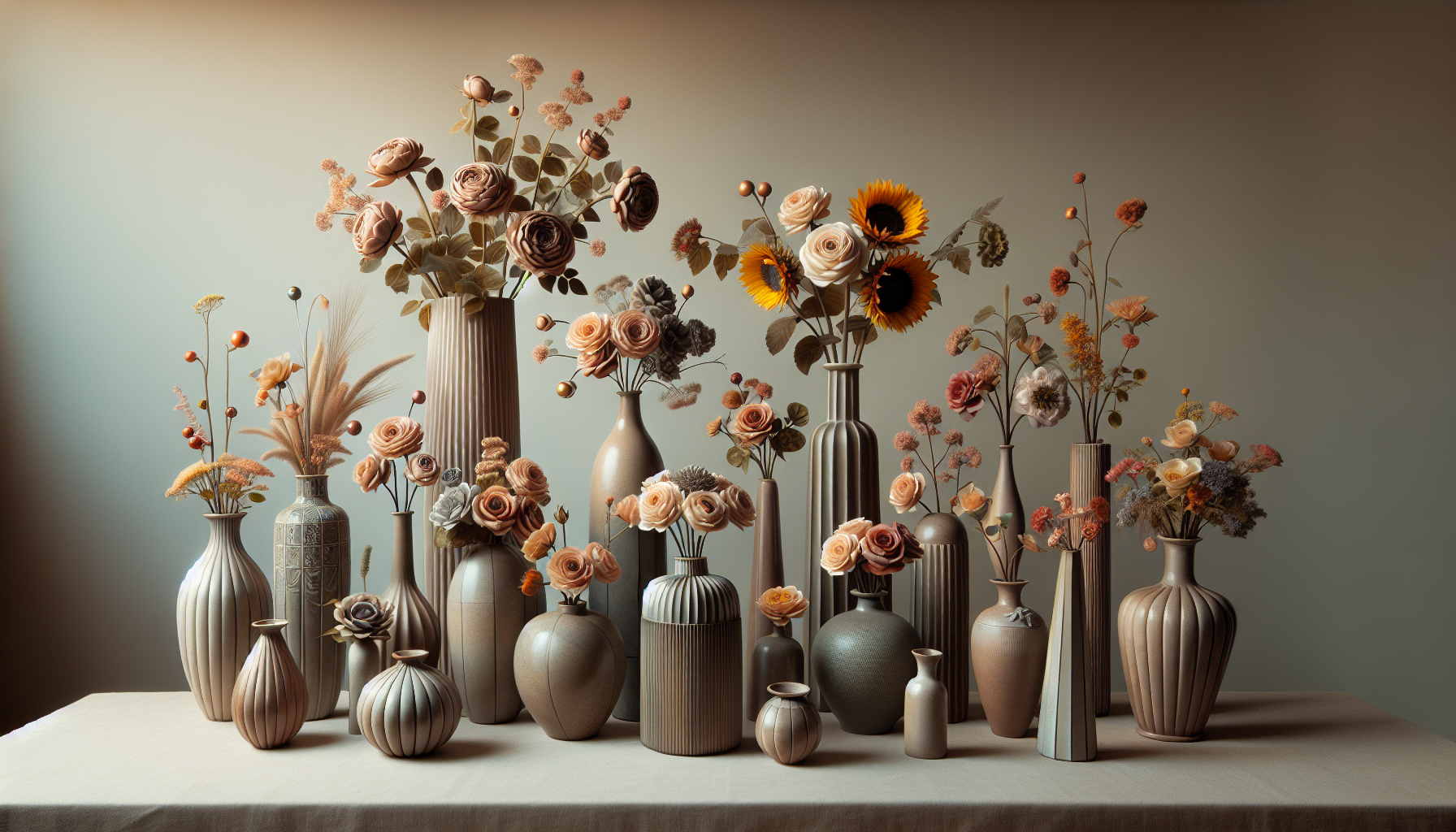
Choosing an appropriate vase shape for your flower arrangement can notably elevate the overall visual appeal. For aesthetic balance and to ensure proper support, select a vase that is half the height of the flowers. For flowers that grow and bend, like tulips, a vase supporting at least half of the stem length is needed to keep them upright.
A variety of vase shapes are available, each suitable for different types of flower arrangements. For instance, posy vases with a bulbous base and narrow neck are perfect for small bunches of flowers like sweet peas, roses, and tulips, showcasing their delicate flower petals. On the other hand, tall column vases complement long-stemmed flowers or arrangements that include branches. The choice of vase shape lends an additional layer of creativity to the art of flower arrangement.
Caring for Your Ceramic Vase
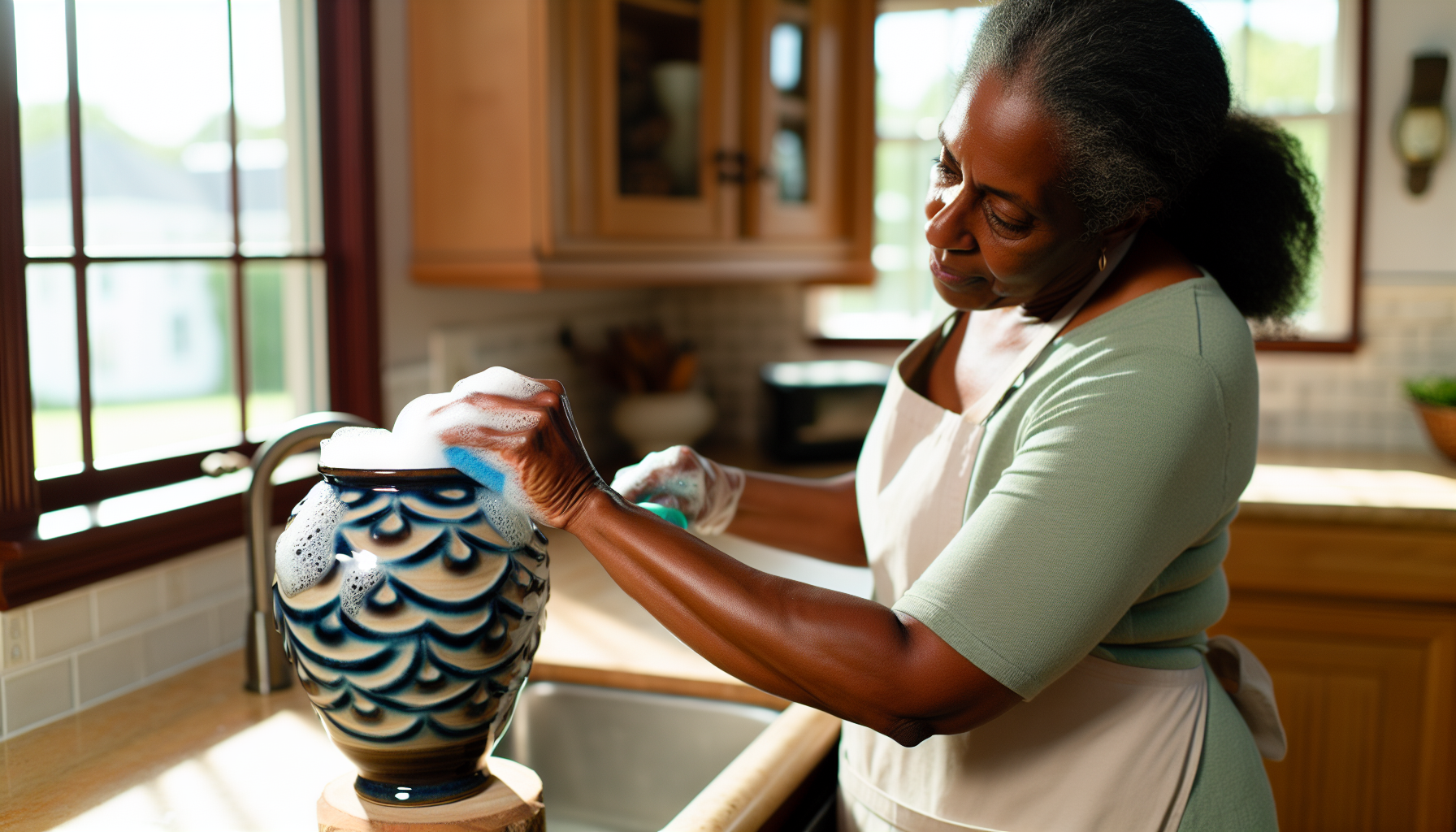
Similar to the care needed for flowers to bloom, ceramic vases too demand attention to sustain their beauty and functionality. Caring for ceramic vases goes beyond just cleaning them. It involves understanding their composition and handling them accordingly to preserve their integrity over time.
Hand washing ceramic vases with warm water is recommended to avoid damage to the glaze or weakening of the vase’s structure that could be caused by using a dishwasher. Regular inspection for damage or wear, especially after cleaning with harsh chemicals or abrasive methods, is also necessary to prevent leaks or damages.
Cleaning Ceramic Vases
Thorough cleaning of ceramic vases is essential to deter bacteria that could curtail the life of flower arrangements. However, cleaning these vases requires caution to ensure the glaze and structural integrity are not compromised.
Various cleaning agents can be used to clean ceramic vases. Baking soda, white vinegar, and water can effectively clean minor stains after soaking for a few hours. For tougher stains, unconventional cleaning agents like denture tablets or Alka-Seltzer can be used to remove stains by leaving them to fizz overnight or for several hours, followed by a thorough rinse. After employing potent cleaning agents, thorough rinsing and soaking of the vase in tap water are necessary to remove any harmful residues.
Preventing Leaks and Damage
Despite ceramic vases being renowned for their durability, they are not indestructible. Careless handling can lead to cracking, leakage, or even shattering. Unglazed interiors can allow water to permeate, potentially damaging the vase and the surface beneath it. Therefore, it’s crucial to handle ceramic vases carefully to avoid sharp impacts, as they are brittle and can easily crack or shatter.
Ceramic vases should also not be exposed to extreme temperatures to prevent the formation of cracks or breakage. Regularly inspecting ceramic vases for damage or wear, particularly after cleaning with harsh chemicals or abrasive methods, is necessary to maintain their longevity and function.
Creative Alternatives for Non-Waterproof Ceramic Vases
Ceramic vases are not uniform creations, and some might not be apt for holding vase water. However, this does not mean they cannot be used creatively. Non-waterproof ceramic vases can be given a new lease of life as decorative pieces for the home, just like glass vases. They can be transformed with faux mercury glass paint, used as containers for kitchen utensils, or even serve as lamp bases.
The beauty of ceramics lies in their versatility. Even without the ability to hold water, ceramic vases can still bring charm and elegance to any space. So, if you have a ceramic vase that can’t hold water, don’t despair. There are plenty of creative alternatives to explore.
Using Faux Flowers
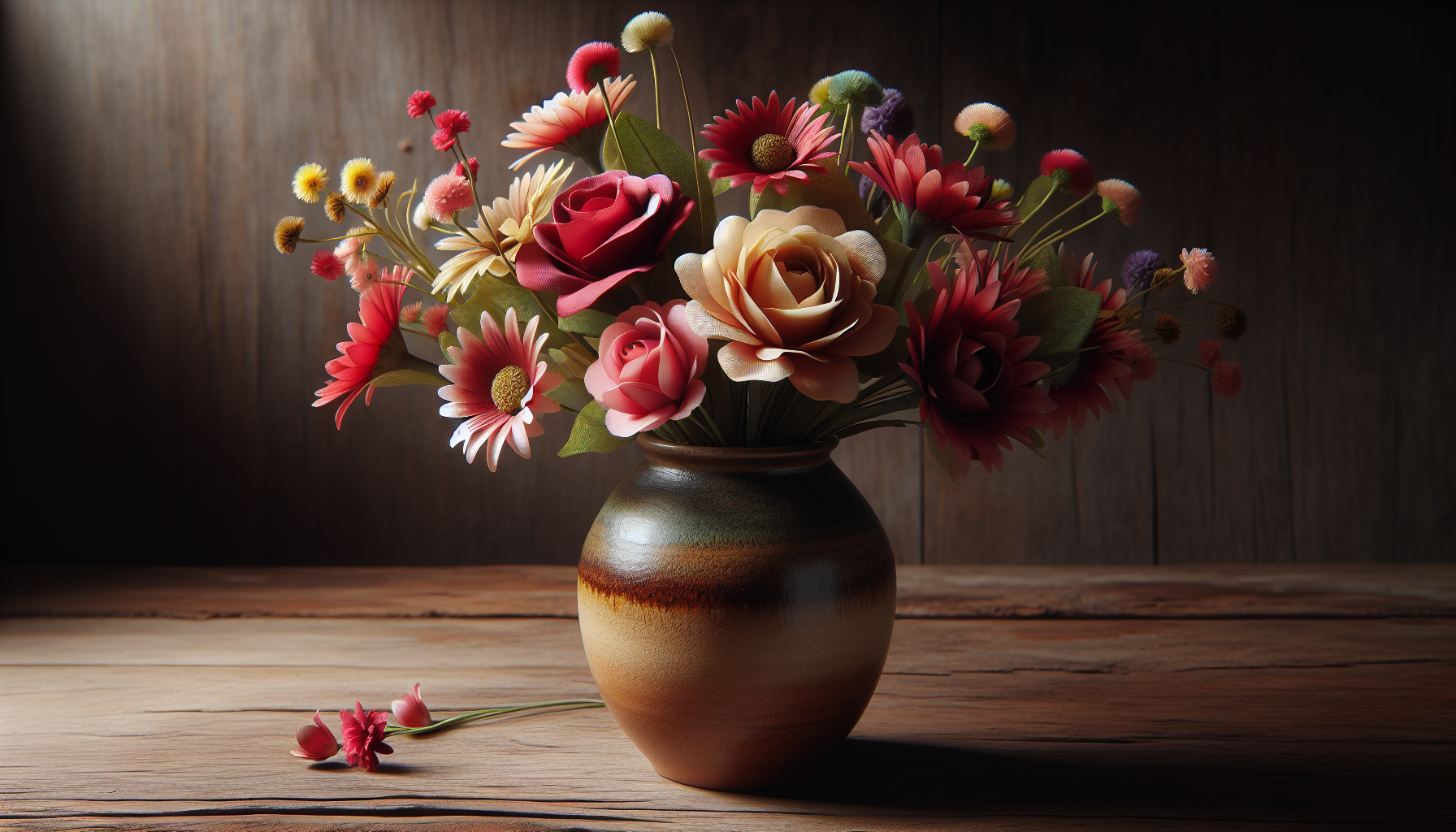
Utilizing fake flowers is a popular alternative for non-waterproof ceramic vases. High-grade silk variants can convincingly imitate actual flowers, making them perfect for these vases. They require no water, last indefinitely, and can be arranged to create an ever-blooming, maintenance-free floral display.
To create a faux floral arrangement that appears more authentic and lush, an assorted mix of textures, colors, and additional greenery can be used. What’s more, the bendable stems in faux flowers offer the flexibility to adjust the height and shape of the arrangement to suit various vase sizes and design preferences.
Crafting Unique Centerpieces
You can also repurpose non-waterproof ceramic vases into distinctive centerpieces. This can be achieved by filling them with vase fillers such as pebbles, glass beads, or decorative sand to add color and texture. Layering different colors and types of vase fillers can create a visually striking centerpiece that doesn’t require water.
For a festive look, ceramic vases can be filled with seasonal items like pine cones during fall or ornaments during the holiday season. This creates a themed centerpiece for special occasions, adding a festive touch to your home decor.
Summary
In conclusion, ceramic vases are much more than just decorative items. Their compatibility with water, determined by their composition and glazing techniques, enables them to function as homes for fresh flowers. Proper care and cleaning are essential to maintain their beauty and functionality. And even when not suitable for holding water, they can be creatively adapted for other decorative purposes. So, whether you’re displaying a bouquet of fresh roses, creating a unique centerpiece, or simply using a ceramic vase as a decorative item, the possibilities are endless.
Frequently Asked Questions
Can I put flowers in a plastic vase?
Yes, you can put flowers in a plastic vase, but it's best to use clean glass containers for better flower development.
How do you waterproof the inside of a ceramic vase?
To waterproof the inside of a ceramic vase, you can use tung oil, Thompson's water seal, or acrylic floor polish, while also painting and sealing the outside for added protection.
Can ceramic be used as a vase?
Yes, ceramic can be used as a vase to showcase beautiful fresh flowers.
Can you put water in a porcelain vase?
Yes, you can put water in a porcelain vase as long as the glaze is done properly, which ensures it is safe to use.
How can I prolong the life of fresh flowers in a ceramic vase?
To prolong the life of fresh flowers in a ceramic vase, trim the stems at a 45-degree angle, remove foliage below the waterline, and change the water every few days. These steps will help keep your flowers fresh longer.




